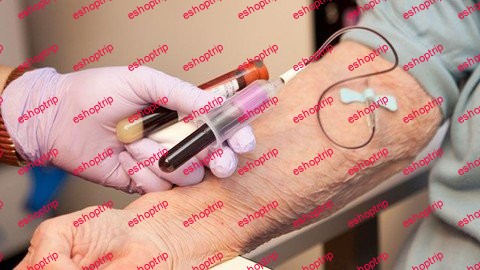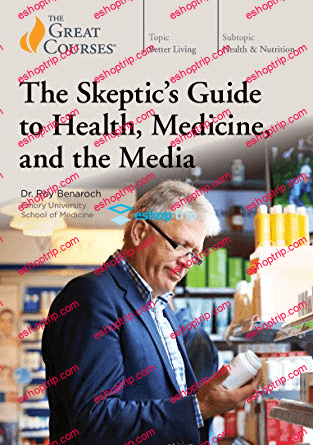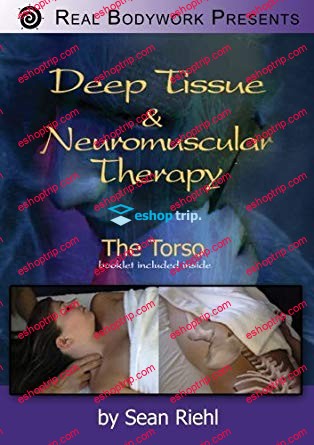Last updated 4/2022
MP4 | Video: h264, 1280×720 | Audio: AAC, 44.1 KHz
Language: English | Size: 1.05 GB | Duration: 0h 58m
Phlebotomy
What you’ll learn
Master the fundamentals of phlebotomy at your own pace
Understanding of the history of phlebotomy and the skills required to specialise in this field
Understanding of the components of blood
How to handle challenges of complications on a daily basis
Learning to examine venepuncture equipment
Requirements
Learners should be over the age of 16
Learners must have a basic understanding of the English language
A sound educational background is an added advantage
Description
Start your phlebotomy career with us and become a fully trained phlebotomist through this course. Phlebotomists play a vital role in maintaining patient’s health, and promoting lab efficiency and effectiveness. The Introduction to Phlebotomy course will provide you a comprehensive insight of what a qualified phlebotomist does. You’ll learn the medical terms you’ll need to know to collect and prepare blood for lab testing.This course will also cover venepuncture and its potential problems, along with needle insertion techniques, needle disposal, and contamination prevention. You’ll study what makes a good blood test, as well as how to document and present your findings before, during, and after the exam. Since blood and specimen collection are an important part of healthcare, you’ll learn how to analyse these specimens in a lab.This course will teach you:The history of phlebotomy and the skills required to specialise in this fieldThe characteristics and traits to enter this fieldThe components of bloodHow to meet the challenges of complications on a daily basisHow to examine venepuncture equipmentThe course will assist your future job possibilities. There are other options for advancement, including supervisory or management jobs. You can also become a registered phlebotomy specialist or a collection phlebotomy specialist by taking a phlebotomy specialist certification course and work as a certified phlebotomist at clinical laboratories, community health centres, hospitals, doctor’s’ offices, nursing homes, and other healthcare facilities.
Overview
Section 1: Getting Started
Lecture 1 Introduction
Section 2: Module 1 – Phlebotomist Role and Desirable Attributes
Lecture 2 Phlebotomist Role and Desirable Attributes
Section 3: Module 2 – Basic Anatomy
Lecture 3 Basic Phlebotomy Anatomy
Lecture 4 Basic Phlebotomy Anatomy Quiz
Section 4: Module 3 – Phlebotomy Equipment
Lecture 5 Phlebotomy Equipment
Lecture 6 Phlebotomy Equipment Quiz
Section 5: Module 4 – Order of Draw
Lecture 7 Order of Draw
Lecture 8 Order of Draw Quiz
Section 6: Module 5 – Consent
Lecture 9 Consent
Section 7: Module 6 – Obtaining the Blood Sample
Lecture 10 Obtaining the Blood Sample
Lecture 11 Venipuncture Demonstration – Prosthetic Arm
Lecture 12 Venipuncture Demonstration – Prosthetic Arm (Part 1)
Lecture 13 Venipuncture Demonstration – Prosthetic Arm (Part 2)
Lecture 14 Venipuncture Demonstration – Prosthetic Arm (Summary)
Lecture 15 Venipuncture Demonstration – Human Arm (Introduction)
Lecture 16 Venipuncture Demonstration – Human Arm
Lecture 17 Venipuncture Demonstration – Human Arm (Summary)
Lecture 18 Obtaining the Blood Sample Quiz
Section 8: Module 7 – Needle Stick Injuries
Lecture 19 Needle Stick Injuries
Lecture 20 Needle Stick Injuries Quiz
Section 9: Module 8 – Infection Control
Lecture 21 Infection Control
Lecture 22 Infection Control Quiz
Section 10: Module 9 – Common Risks in Phlebotomy
Lecture 23 Common Risks in Phlebotomy
Section 11: Phlebotomy Theory Test
Lecture 24 Phlebotomy Theory Test Introduction
Lecture 25 Phlebotomy Theory Test Summary
Section 12: Introduction to Phlebotomy Conclusion
Lecture 26 Introduction to Phlebotomy Conclusion
Section 13: Exams : Introduction to Phlebotomy
Individuals working in the healthcare sector,Nursing staff,Medical assistants,Lab technicians,Pre-med students,Healthcare students,Anyone who wants to become a certified phlebotomist
Homepage
https://anonymz.com/?https://www.udemy.com/course/introduction-phlebotomy/











Reviews
There are no reviews yet.